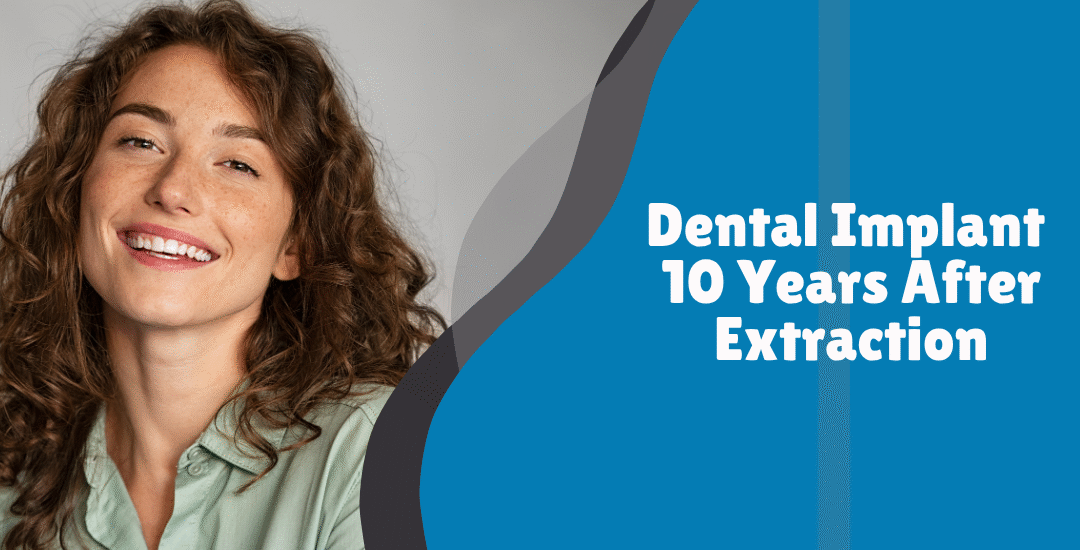Let’s be honest—life happens. You might’ve lost a tooth years ago, and somehow, replacing it just kept getting pushed down the priority list. And now, here you are wondering, “Is it too late?”
The good news? It’s not. You can absolutely get a dental implant 10 years after extraction. Sure, it takes a bit more planning, but with the right care, restoring your smile is completely possible—even after all this time.
As Dr. Alisha Khan, founder of Evershine Dental and Cosmetic Clinic in Chembur, likes to say,
“We can’t rewind time, but we can absolutely restore what’s been lost. With today’s dental advancements, even long delays don’t have to mean permanent gaps.”
So, if that empty space in your smile has been bothering you, let’s talk about what’s really possible.
Can You Get a Dental Implant After 10 Years?
In one word—yes.
But here’s the thing: waiting a decade does change the situation a little. When a tooth’s gone, your jawbone slowly starts to shrink because it’s no longer getting the stimulation it needs. Think of it like this—just like muscles weaken when you don’t exercise them, the bone under a missing tooth starts to thin out.
That doesn’t mean implants are off the table. Far from it. It just means we might need to rebuild the area a bit first. Techniques like bone grafting help restore that lost bone so your implant has a strong, healthy foundation. And with today’s advanced tools, the whole process is more precise and comfortable than ever.
What Happens If You Delay Dental Implant Placement?
Let’s paint a quick picture. Imagine a bookshelf with a missing book. Over time, the other books start to lean, right? That’s exactly what happens in your mouth. Nearby teeth begin to drift into the empty space, throwing off your bite and sometimes even affecting how you speak or chew.
Then there’s the issue of bone loss. Without a tooth root in place, the jawbone slowly fades away. And if that wasn’t enough, missing teeth can also change the way your face looks—causing a sunken or sagging appearance that makes you look older than you are.
Sounds like a lot, but here’s the silver lining: it’s all manageable. Even if these changes have already started, treatments like delayed dental implants combined with bone grafting can turn things around beautifully.
How to Prepare for a Delayed Dental Implant
Feeling a bit nervous? That’s completely normal. But preparing for an implant after all this time is a pretty straightforward process.
First comes a full check-up and a CBCT scan—that’s a fancy 3D X-ray that lets your dentist see exactly what’s happening under the surface. If the bone’s a bit too thin, a bone graft may be the next step. This helps rebuild the foundation so your implant has the stability it needs to last a lifetime.
As Dr. Alisha Khan puts it, “It’s all about setting you up for success. With a little patience and planning, even the most delayed cases lead to incredible results.”
Success Rates of Dental Implants Placed Years After Extraction
You might be wondering, “Is it really worth it after all this time?”
Absolutely. Success rates for implants placed even years later are incredibly high—often between 90% and 95%. That’s because modern dentistry focuses on personalized treatment plans and using advanced tools to make sure everything is done right the first time.
The biggest factors for success?
Making sure your bone is strong enough (and rebuilding it if it’s not).
Post-Implant Care and Maintenance for Long-Term Success
Once your implant is in place, caring for it becomes your superpower.
Stick to the basics—brush twice a day, floss like you mean it, and don’t skip those dental check-ups. If you smoke, this is the perfect reason to quit. Smoking can slow down healing and raise the risk of implant failure. And if you tend to grind your teeth at night, wearing a night guard will help protect your new implant.
With proper care, a dental implant isn’t just a temporary fix—it’s a lifelong investment in your smile and confidence.
Conclusion
So, is it too late for a dental implant 10 years after extraction? Not even close.
With the right care, expert hands, and a little patience, you can absolutely turn things around. It doesn’t matter how long it’s been—what matters is that you’re ready now. And with the team at Evershine Dental and Cosmetic Clinic, you’re in the best possible hands to make that happen
Frequently Asked Questions
Is It Too Late for a Dental Implant After 10 Years?
Nope, it’s never too late. While you might need some preparation like bone grafting, implants placed after a decade still have great success rates.
How Much Bone Is Needed for a Dental Implant?
Usually, you’ll need at least 1mm of healthy bone around the implant for proper support. That’s why advanced imaging is so important—it helps plan everything down to the last detail.
What Is the Cost of a Delayed Dental Implant?
In Chembur, you can expect the cost to fall between ₹35,000 and ₹70,000 per implant, depending on whether you’ll need additional procedures like bone grafting.
Will I Need a Bone Graft for an Implant After 10 Years?
In many cases, yes. Bone naturally shrinks without a tooth root, but bone grafting can rebuild the area so your implant is secure and lasts for years.
References:
- American Academy of Implant Dentistry (AAID). Explore the science behind bone grafting and how it supports dental implants: https://www.aaid.com
- National Institute of Dental and Craniofacial Research (NIDCR). Get detailed insights into dental implants and oral health research: https://www.nidcr.nih.gov


